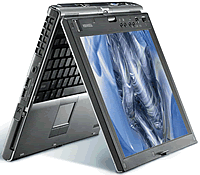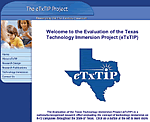1-to-1 Computing :: Teaming Up to Go 1-to-1
##AUTHORSPLIT##<--->
Districts are discovering that the secretto implementing a good laptop programis finding a good partner.
 ANY TECHNOLOGIST WILL TELL YOU there’s more than one way to create a 1-to-1 computing environment. But how do you create one that works? Some districts are finding that the key to launching a successful program quickly and easily is partnering with others. In the case of Texas Public Schools, these others have included everyone from vendors to a public agency. At Cincinnati Country Day School, district administrators joined with a solution provider to provide good deals for parents. And at Catskill Central School District (NY), school officials teamed up with a local vendor to lease equipment that can be refreshed whenever the hardware becomes antiquated. Each method has met with great success.
ANY TECHNOLOGIST WILL TELL YOU there’s more than one way to create a 1-to-1 computing environment. But how do you create one that works? Some districts are finding that the key to launching a successful program quickly and easily is partnering with others. In the case of Texas Public Schools, these others have included everyone from vendors to a public agency. At Cincinnati Country Day School, district administrators joined with a solution provider to provide good deals for parents. And at Catskill Central School District (NY), school officials teamed up with a local vendor to lease equipment that can be refreshed whenever the hardware becomes antiquated. Each method has met with great success.
What makes these partnerships work isn’t exclusively good technology, but a combination of good technology and great service. Joe Hofmeister, technology director at Cincinnati Country Day School, says this one-two punch is essential to any successful partnership, and can be the difference between a revolutionary endeavor and a colossal waste of money and time.“Sometimes in the IT business, it isn’t always about IT,” says Hofmeister. “The sooner aneducational organization realizes that, the more quickly it will recognize the value of findingequal partners who want to make a difference.”
A Good ‘TIP’
One could argue that the mother of all laptop programs is the Technology Immersion Project in Texas. Launched in 2004, TIP is a public-private collaboration between the Texas Education Agency and school district, consulting, communications, research and evaluation, and vendor partners. The effort grew out of state legislation that called upon the TEA to implement a pilot and determine the conditions under which immersive technology holds the greatest potential for improving student achievement. Currently implemented on 29 campuses in 22 different school districts (with more to come), TIP is transforming the Lone Star learning environment.
The program pioneers an entirely new concept in educational technology—total immersion of faculty and students in technology. TIP steps beyond 1-to-1 computing experiments and completely envelops participants in technology and professional development. It also includes an evaluation component (see “Evaluating TIP: Year 1”). According to Anita Givens, senior director for instructional materials and educational technology at the TEA, TIP bundles six critical areas of technology resources into a single package for both teachers and students. Laptops and tablet computers form one of these six areas. The others are:
- productivity tools (software)
- online content resources
- online assessment tools
- comprehensive professional development
- technical support
Setting up the technology for a program this broad certainly wasn’t easy. The TEA secured roughly $16.5 million in various federal technology funds to support immersion implementation and opened the program up for standard vendor bids. Instead of submitting requests for proposals for the six critical areas separately, Givens and her colleagues decided to solicit bids for the project in its entirety. Very soon after, 17 different vendors replied. Ultimately, the TEA settled on one package from Apple and two packages from Dell, one for the Inspiron laptop and one for the Latitude, which is slightly more expensive.
“We wanted to manage this from a single point of contact so individual schools didn’t have to worry,” Givens says. “Whatever their problems might be, we wanted them to have one place to go for support and implementation at all times.”
Sometimes in the IT business, it isn’t always about IT. The sooner aneducational organization realizes that, the more quickly it will recognizethe value of finding equal partners who want to make a difference.
Joe Hofmeister, Cincinnati Country Day School
Since the program spans so many different areas, the hardware is only the tip of the TIP iceberg. Givens says professional development has been the most important component of the pilot’s success, with the two vendors serving as consultants for administrators and as trainers for teachers to show both groups how to incorporate immersive technology into their worlds. On the administrative side, vendor representatives helped superintendents develop policies for electronic homework submission as well as disciplinary guidelines that penalize those who fail to charge their laptops. For educators, Apple and Dell sponsored a series of workshops to help teachers rebuild curriculum around technology and virtually eliminate the printed page altogether.
Professional development and general inclusion in the TIP program isn’t automatic. Givens says districts compete for the available funding; to qualify for a grant, they must meet the basic requirements for federal E-Rate and No Child Left Behind funds. The program is financed through 2007-2008, though the Texas Legislature has approved an extension to 2011. The TEA evaluates every pilot annually to make sure the programs are up to snuff. Of the 23 schools involved in the program to date, the smallest school has 100 students, and the largest has 1,600.
Floydada Independent School District is a TIP district. Project Coordinator Sandy Vaughn says the program has taken two of her schools “into the 21st century.” Prior to the launch of TIP, Floydada had one lab with 20 computers in its junior high school. Today, the school boasts 265 Apple iBooks—one computer for every student. The junior high program was so successful that Floydada used its own funds to launch a second pilot in the district’s high school, deploying 333 iBooks. Vaughn says that if the school can secure more money down the road, it will expand the pilot to include other grades as well, offering an iBook to every single student in the district.
“Our district is a poor district, and one of the biggest things we’ve seen is that TIP has leveled the playing field for our students,” she says. “Anything we can do to make students more excited about education, we need to try to do, in every grade.”
Partners in a Common Goal
A program such as TIP is designed for an entire state’s worth of schools. In smaller districts and private schools, technologists improvise solutions of a different kind. Such is the case at private Cincinnati Country Day School. There, technologists have pieced together an agreement with Toshiba and a solution provider. The way the program works, instead of spending IT dollars on computers, school officials require parents to buy them (except for the parents of students who receive financial aid). The result: uniform district technology, involved parents, and cost savings across the board.
Country Day first launched a 1-to-1 computing program in 1996, after participating in a workshop on the subject sponsored by Microsoft at company headquarters in Redmond, WA. Even then, the approach was a rejection of the traditional pilot program model. Looking back, Hofmeister, the technology director, says he had grown weary of reading about schools and school districts that looked to vendors for free or discounted laptops in exchange for “realworld tests” of the technology. He wanted to devise a laptop program in which his school and participating vendors truly were partners, working together toward a common goal.

THE FACE OF 1-TO-1 Students at
Cincinnati Country Day School will be
using Toshiba Portégé M400 tablets this fall.
“We have felt that a ‘partnership’ with a vendor too frequently means sticking out your hand and expecting them to put something in it,” Hofmeister says. “We didn’t expect companies to be giving us stuff; we expected them to be fair and competent. We wanted something much more lasting, something both sides could count on for years to come.”
The solution became clear around 2000. Working with Toshiba, the school inked a contract with Fairfax, VA-based Richards Computer for Satellite 3500 laptops preconfigured with programs and databases students would need. The school then set up a deal whereby parents could purchase the technology from Richards. As part of the deal, Richards agreed to send technicians to the campus at the beginning of every school year to image hard drives. The company also vowed to handle primary maintenance, guaranteeing it would use Federal Express to resolve all major problems overnight for up to four years from the date of purchase.
The program started small, covering only a handful of students in a few grades. Today it includes 575 kids in grades 5-12. Over the years, the primary technology migrated from laptops to Toshiba Portégé M200 tablets. For the new school year, students purchased Toshiba Portégé M400 tablets. The price tag for each: $2,400, which includes software licenses, setup, and four full years of maintenance. With students and parents behind the plan, Hofmeister says the biggest challenge has been getting Toshiba to understand the district’s needs. Whereas many corporate customers are interested in the latest and greatest models, schools simply need reliable models that don’t break the bank.
“These guys are in the sales business, so it’s hard for them to see that all we care about is that each student has a computer that works,” says Hofmeister. He adds that the relationship with Richards Computer has been critical to keeping student machines up and running, and notes that the company’s remote location hasn’t been a problem. “That’s all part of the partnership we knew we wouldn’t get by just accepting some free stuff.”
Laptop Leasing
Nothing was free when the Catskill Central School District partnered with local vendor IBM in 2004 to develop a computing program focused on laptops and tablet PCs. Instead, district officials purchased 860 IBM/Lenovo ThinkPad R52s under a lease program that refreshes automatically every three years. Cheryl Rabinowitz, the district’s director of technology, says leasing presented benefits over buying because her schools get state-of-the-art equipment with every refresh. When all is said and done, by the end of the decade, Catskill schools will have close to 3,000 new machines, enough to give one to every student and teacher. Today every classroom in Catskill middle and high schools has a cart of five laptops. Most departments have two carts of 30 laptops apiece, while the music, foreign language, ESL, physical education, and health departments have one cart each.
Evaluating TIP: Year 1

Data from the Texas Technology Immersion Project shows benefits, but as yet no conclusive finding on student achievement.
An important companion to Texas’ Technology Immersion Project is its evaluation component, commonly known as eTxTIP. Under eTxTIP, officials at the Texas Center for Educational Research, Texas A&M University, and the US Department of Education are conducting an evaluation of 44 middle school campuses. Half of the campuses are implementing the TIP program; the other half are the control campuses not attempting technology immersion of any kind.
The purpose of eTxTIP is to conduct a scientific evaluation of the impact of technology immersion on campus culture, teacher professional behavior and efficacy, and student behavior, attitudes, and performance. The project uses a mix of qualitative and quantitative methods in a quasi-experimental design to follow students and teachers at the 44 middle school campuses. Students in sixth grade are the target for the duration of the evaluation study and will be followed through seventh grade, eighth grade, and beyond.
After obtaining one full year of data, eTxTIP released its first report this past April. Among the more interesting conclusions drawn from the data:
- Technology immersion has a significant positive impact on student attitudes, behavior, and disciplinary actions.
- Technology also benefits the surrounding community, where support for immersion campuses runs high.
Interestingly, researchers were not able to divine the impact of technology immersion on student achievement from the first batch of data. A second year of data is now being analyzed, and researchers will continue gathering information for several more years.
When teachers want to incorporate the hardware into a lesson, they instruct students to take a machine or share one. Superintendent Kate Farrell says that while the goal of 1-to-1 computing is still a long way off, current program levels fulfill district objectives of putting more technology in the hands of students and staff to drive curriculum and instruction.“Slowly but surely, we’ll get everyone up to speed,” she says.“We waited this long for laptops in our district, we want tomake sure that when we do it we’re doing it right.”
The Catskill Central School District in upstate New York partnered with IBM and CDW-G for its laptop program. IBM leased the district the computers and CDW-G is handling the maintenance.
The Catskill laptop-lease program is administered directly through IBM. After the initial agreement was ironed out, IBM representatives realized they wouldn’t be able to meet the district’s technical support needs, and introduced CDW-G, one of the vendor’s technology partners, to tackle all maintenance issues. Almost immediately, CDW-G technicians swung by the district and helped Catskill technologists prepare the machines for rollout. In the weeks that followed, the same technicians returned to upstate New York to help with everything from wireless internet to software installation, as well as consult on which laptop carts to buy. The CDW-G techs helped in other areas, too. They pitched in on a project to integrate the district’s student management system with other software, including a new curriculum mapping and instructional planning product from ClassLink.
IN THE NEWS…

EARLIER THIS SUMMER, the Maine Department of Education signed off on a $41 million contract with Apple that will provide new laptop computers to more than 30,000 seventh- and eighth-graders and their teachers, extending the state’s laptop program for another four years. The signing comes after state officials announced in March that Apple had been chosen over CDW-G.
All told, Apple will equip 32,000 students and 4,000 teachers with iBook notebook computers and upgraded wireless networks. As part of a broader partnership, the four-year contract also includes warranties and perks such as professional development for each of Maine’s 241 public middle schools.
The new deal, announced in July, works out to an annual cost of $289 per laptop. This time around, the deal will be made available to private and parochial schools, as well as to the state’s high school and elementary schools.
Maine was the first state to equip students statewide with laptop computers, and state officials say the initiative remains the biggest in the nation.
CDW-G representatives also participated in professional development workshops, hosting“Lunch and Learn” events to get teachers morecomfortable with the technology. Rabinowitzsays these sessions have been invaluable forfamiliarizing teachers with the idea of 1-to-1computing, paving the way for continuation ofthe program. “We knew where we wanted togo, and CDW-G had the expertise to get usthere,” she says. “We simply couldn’t havedone it without their help.”
:: web extra :: For more information on this topic, visit www.thejournal.com. In the Browse by Topic menu, click onHardware.
Matt Villano, a writer and editor based in Half Moon Bay, CA, writes regularly for T.H.E. Journal and is a senior contributing editor to T.H.E.sister publication Campus Technology.